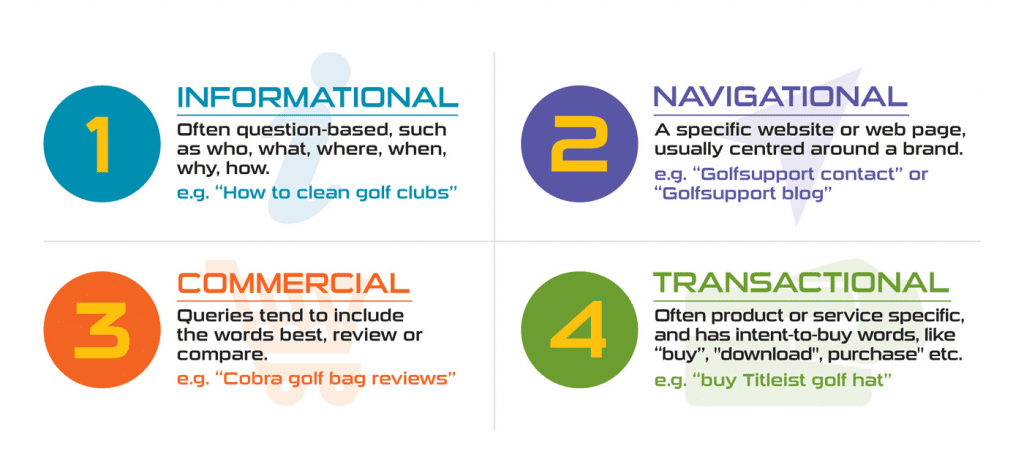TL;DR
- Intent based marketing allows you to market a product based on a user’s intent behind the search.
- There are four types of search intent: informational, nagivational, commercial and transational.
- Intent marketing assumes that not everyone is ready to apply and gives you better advantage to target customers based on stage they’re at.
When you search the web, you have a rough idea in your mind of what you’re looking for.
If you’re midway through cooking a bolognese and realise you’ve forgotten to defrost the mince, you want to know if blasting it in the microwave will kill you or not, right now. You’re looking for a basic yes or no. Not a scientific explanation of why you shouldn’t do it.
But, do you ever wonder why it’s actually the 57-year-old woman on Quora that answers your question? More importantly, why it’s her one line about how she’s been doing it for years and not died yet that gets shown to you?
It’s because what she’s saying is clear, to the point, and answers your question (whether you trust her is up to you.)
Ultimately, whatever you’re searching for, you have an intention. Search engines have to work out what that intention is in order to show you the best results.
Understanding user intent is a smart way to make sure you’re in front of the right people at the right time. Search engines prioritise the most relevant results. So if you’re giving people what they want – in this case, a clear answer about mince – you’ll climb the rankings.
A beef farmer in Surrey might be scratching his head about why his page ranks 107th because his content is good and full of knowledge. With this search intent though, it’s fluff. It doesn’t answer the user’s question. So, it falls to the bottom of the results.
What is intent-based marketing?
There should always be intent when you market to customers. But intent marketing is specific to marketing a service or product based on a user’s intent to adopt, purchase or consume that service or product. The intent can be implicit or explicit.
Intent marketing can also generate higher ROIs in theory, as the intention to purchase or use is already there so there’s no need to create awareness for a product or service. That’s why intent data is so important to any digital marketing strategy, in key areas like PPC and SEO.
Behavioural marketing can also help by enticing customers with embellished forms of intent.
Types of search intent

Let’s break things down into four types of search intent:
- Informational
These are most often questions based on the classic who, what, where, when and why.
Example: “What to do when a badger takes over your garden”
- Navigational
These tend to be for brands or websites that the user is familiar with and they know where they want to go.
Example: “Amazon customer support”
- Commercial
These are usually searched for before someone makes a purchase e.g for things such as comparisons or reviews.
Example: “Best wireless charger”
- Transactional
These tend to be made by people who are ready to buy (and are often the most targeted).
Example: “Buy bumper pack texas BBQ pringles”
Google’s “micro-moments”
Google likes to promote innovation and has its own version of this called micro-moments which are defined as an “intent-rich moment”. It breaks them down into:
- I-want-to-know moments
- I-want-to-go moments
- I-want-to-do moments
- I-want-to-buy moments
Whatever the moment, Google concludes that “consumers want what they want, when they want it” and that people are drawn to brands that “deliver on their needs”.
The fact Google have spent the time on their own definitions of search intent shows how much it prioritises delivering results which answer its user’s needs above everything else.
Search intent can change
It’s important to bear in mind that people change their minds a lot. Whilst someone might have set out with one intention, they could quickly evolve into another if they get swayed by what they learn.
For instance, if the person next to you on the bus was playing a fun looking game, you might search for its name – informational. Then, once you’ve got that information, you might want to look up some reviews to see if it’s actually as good as it looks – commercial. Finally, if you’ve convinced yourself that you deserve a treat after the week you’ve had, you become ready to buy – transactional.
Now, you might not have to search separately for these things if the user journey has been well-planned out. It’s time-consuming having to enter:
- “cooking game Nintendo Switch”
- “Overcooked 2 reviews”
- “buy Overcooked 2”
The best results will give you everything you need all at the same time. But in a way that is easy to digest and act on. You’re not going to reach the top results if you bury the key information in mounds of text.
That’s why understanding a user’s intent, but also understanding how it can evolve for your specific offering, is the key to providing a good experience. This not only helps your customers but also helps you climb the SERPs.
Similarly, if you offer a 24-hour locksmith service and are running PPC advertising to bring in more customers, then you want to give them the information they want – fast. The ads that win the bidding war will be those which give you the things you want to know. In this case:
- What’s your number?
- How fast can you get me in from the cold?
No one, stood outside their own house thinking about their own stupidity, cares about whether you use “high-quality, anti-scratch smart locks”. They care about how much you’re going to cost them. So, your ads and customer journey need to reflect that. Ads with call extensions on are going to win hands-down every time against someone who buries their number at the bottom of their website.
Knowing your customer journey really helps to understand what people may be searching for at different stages of your funnel. Then you want to work out how you can answer whatever they’re looking for in the shortest amount of time. It can also help build consumer trust and loyalty. If your customers feel like you know them
Don’t assume everyone is ready to buy

However, having said that, the biggest mistake you can make when trying to rise up the SERPs is assuming that everyone is ready to buy.
Or, trying to sell to people constantly.
You need people to be your fan before they become your customer. This can be for a short moment just before they make their decision to buy: “oh these look great, just what I’m after!” or perhaps it’s a longer process of “this brand’s given me reliable information in the past, I’ll buy from them because I trust them.” You don’t know how long people will know about you before they commit to using you, but one thing is true regardless: they won’t become a customer if they’re not a fan of what you do. And you don’t make someone a fan by looking like you only care about their money.
Divide your customers up into different categories depending on their awareness of your brand.
Let’s say you owned a shoehorn company. Your audience can be broken down into:
- Completely unaware
They have no idea that the way they’re putting their shoes on is long-winded and a lot of effort.
- Problem aware
They know they struggle to put their shoes on, and it annoys them, but they don’t realise there’s a product that can alleviate the stress.
- Solution aware
They know shoehorns exist, but they don’t know where to get them from or how much they are.
- Product aware
They know of your particular shoehorn but haven’t yet purchased or pursued more details.
- Most aware
They know about your company, have previously made a purchase with you and love your brand.
If you launch straight into your sales page talking of all the features your product has, you won’t attract the people who are completely unaware or problem aware. It won’t make sense to them. You need a separate funnel for these people such as ads which bid on “struggling to put shoes on” or similar problems. Or you need to catch their attention when they’re looking at buying another pair of shoes.
It’s all about thinking bigger than bidding on the keyword “buy shoehorn” and hoping for the best.
Working backwards
The best way to maximise your resources, whether it’s your paid search budget or content writer’s time, is to work backwards.
Rather than thinking of a piece of content that would broadly appeal to your target audience, figure out what they’re searching for. What keywords could they be entering that you don’t currently rank for? If people often have a lot of questions about your industry, consider putting together a FAQ-style page to clear up any confusion.
Blogs are great for catching the interest of people who aren’t ready to buy but can also hold all the information your audience would need if their intent changes.
Whilst you shouldn’t create content purely based on SEO, having it in mind whilst coming up with ideas is imperative. Knowing the intentions of your audience means you can provide the answers they’re searching for. In case you didn’t know already, Adzooma’s SEO Performance Report gives you an insight on what keywords are resonating with your audience and helps you get ahead of your competitors – you can sign up for free, here.
If you take the time to map out what you anticipate these intents to be, you can then create a strategy which caters for every type. This also means you can design your paid search ads, web pages and content around getting users to the answers they need quickly. This will enable you to provide value to users which Google will reward you for.



